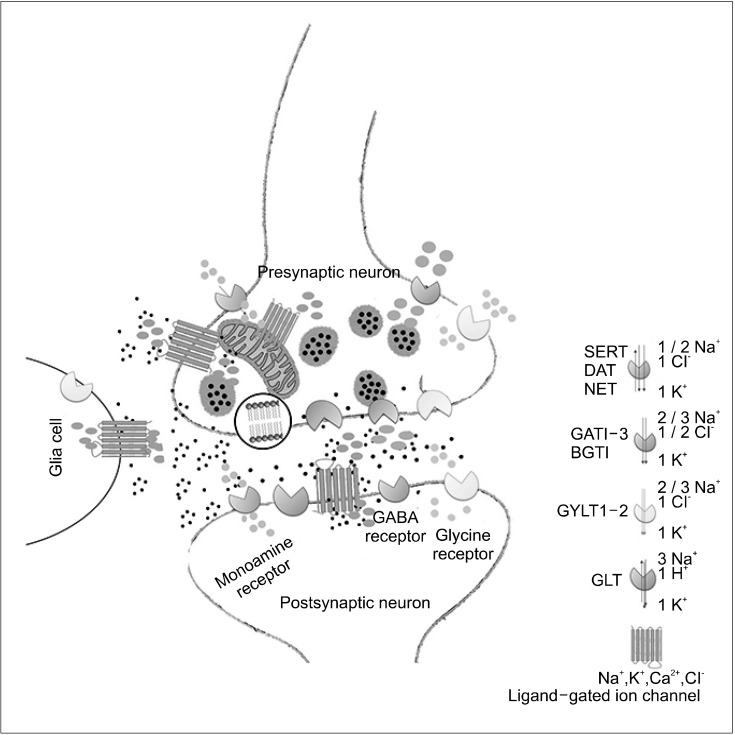Fig. 1.
A schematic representation of the physiologic function of solute carriers (SLCs) and their role in synaptic transmission in the central nervous system. SLC transporters are critical in the termination of synaptic transmission for amino acid neurotransmitters in addition to their role in providing essential nutrients and osmolytes to neurons and glial cells. Dopamine, serotonin, noradrenaline, glycine, and GABA are removed by neurotransmitter sodium symporters. The monoamine transporters (NET, SERT, and DAT) are localized to extra-synaptic sites, whereas GATs, GLYTs, and osmolyte transporter (BGTs), are localized to synaptic and extra-synaptic sites in addition to glial cells. Inhibition of NET, SERT, and DAT transporters by drugs reduces the clearance of neurotransmitters from the synapse, thus increasing their stay time in the synaptic cleft. The resulting increased concentrations of monoamines in the synaptic cleft improve receptor occupancy, leading to increased activation of ligand-gated ion channels. GLTs play a major role in maintaining the extracellular glutamate concentration at low levels and to protect neurons from the excitotoxic action of glutamate. Due to their crucial role in keeping basal concentrations of neurotransmitters low, malfunction, improper, or dysfunction of these transporters may lead to developing neurodegenerative disorders.
Neurotransmitter transporters (GAT [g-aminobutyric acid], GYLT [glycine], and monoamine trasporter DAT [dopamine], NET [noradrenaline], SERT [serotonin]). Osmolyte transporter, BGT (betaine). Neutral amino acid transporter, GLT (glutamate).

